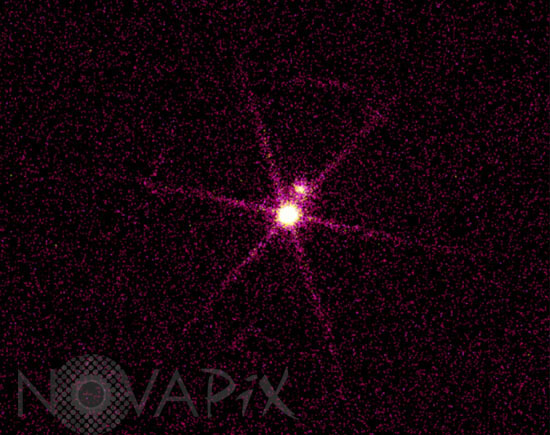Photo Agency - Astronomy - Space - Nature

Sirius A and Sirius B seen in X-ray
author: Nasa/Cxc/Sao/Novapix
reference: a-eto01-00012
Image Size 300 DPI: 18 * 14 cm
An X-ray image of the Sirius star system located 8.6 light years from Earth. This image shows two sources and a spike-like pattern due to the support structure for the transmission grating. The bright source is Sirius B, a white dwarf star that has a surface temperature of about 25,000 degrees Celsius which produces very low energy X-rays. The dim source at the position of Sirius A, a normal star more than twice as massive as the Sun, may be due to ultraviolet radiation from Sirius A leaking through the filter on the detector. In contrast, Sirius A is the brightest star in the northern sky when viewed with an optical telescope, while Sirius B is 10,000 times dimmer. Because the two stars are so close together Sirius B escaped detection until 1862 when Alvan Clark discovered it while testing one of the best optical telescopes in the world at that time. The white dwarf, Sirius B, has a mass equal to the mass of the Sun, packed into a diameter that is 90% that of the Earth. The gravity on the surface of Sirius B is 400,000 times that of Earth.
Keywords for this photo:
1999 - A STAR - ASTRONOMY - CANICULA - CANIS MAJOR - CHANDRA - DWARF - SIRIUS - SIRIUS A - SIRIUS B - STAR - WHITE DWARF - X - X-RAY -
Contact : Stéphane Aubin +33-(0)9-51-26-53-76
© Novapix - All rights reserved


